- Home
- Graham Hancock
Magicians of the Gods: The Forgotten Wisdom of Earth's Lost Civilization Page 16
Magicians of the Gods: The Forgotten Wisdom of Earth's Lost Civilization Read online
Page 16
Life like a god they gave him;
Breath eternal like a god they brought down for him,
… Zisudra the king,
The preserver of the name of vegetation and of the seed of mankind.47
The final thirty-nine lines are missing.48
The Seven Sages
The late Professor Samuel Noah Kramer, one of the great authorities on ancient Sumer, observed that there are “tantalizing obscurities and uncertainties” in this oldest surviving written version of the worldwide tradition of the Flood.49 What there can be no doubt about at all, however, is that the tablet speaks of an urban civilization that existed before the Flood and provides us with the names of its sacred cities: Eridu, Badtibira, Larak, Sippar, Shuruppak. These cities, we are told quite specifically, were swallowed up in the deluge. Moreover, long after Sumer itself had ceased to exist, rich traditions concerning the five cities, the antediluvian epoch, and the Flood survived in Mesopotamia, and were repeated by the cultures of Akkad, Assyria and Babylon that later rose to prominence, almost down to Christian times.50 Indeed it is fair to say that the traditional history of this region, as it was told in antiquity, is very clearly divided into two different periods—before and after the Flood—and that both periods were regarded by the peoples of the region as absolutely factual and real.
Figure 27: The ancient empires of Mesopotamia rose to prominence at different periods of history but all maintained traditions of a global Flood that had all but destroyed mankind in remote antiquity.
We saw in Chapter One how the Mesopotamian traditions not only preserved memories of antediluvian cities, but also of an antediluvian civilizing hero called Oannes, and the brotherhood of Seven Sages, the “Seven Apkallu” who are said to have supported his civilizing mission. As the reader will recall, these sages are often depicted in the surviving art of the region as bearded men holding a peculiar kind of bag or bucket, but sometimes they are also shown as therianthropes, part bird and part human in form. As I dug deeper, going back and carefully rereading the accounts of the Babylonian priest Berossos that I had first touched upon when I was researching Fingerprints of the Gods, I was reminded that Oannes and the Apkallu sages were also sometimes depicted in a different therianthropic form, in this case part fish, part human. Each of them was paired as a “counselor” to an antediluvian King and they were renowned for their wisdom in affairs of state and for their skills as architects, builders and engineers.51
Berossos compiled his History from the temple archives of Babylon (reputed to have contained “public records” that had been preserved for “over 150,000 years”52). He has passed on to us a description of Oannes as a “monster,” or a “creature.” However, what Berossos has to say is surely more suggestive of a man wearing some sort of fish-costume—in short, some sort of disguise. The monster, Berossos tells us:
had the whole body of a fish, but underneath and attached to the head of the fish there was another head, human, and joined to the tail of the fish, feet like those of a man, and it had a human voice … At the end of the day, this monster, Oannes, went back to the sea and spent the night. It was amphibious, able to live both on land and in the sea … Later, other monsters similar to Oannes appeared.53
Bearing in mind that the curious containers carried by Oannes and the Apkallu sages are also depicted on one of the megalithic pillars at Göbekli Tepe (and, as we saw in Chapter One, as far afield as ancient Mexico as well), what are we to make of all this?
The mystery deepens when we follow the Mesopotamian traditions further. In summary, Oannes and the brotherhood of Apkallu sages are depicted as tutoring mankind for many thousands of years. It is during this long passage of time that the five antediluvian cities arise, the centers of a great civilization, and that kingship is “lowered from heaven.” Prior to the first appearance of Oannes, Berossos says, the people of Mesopotamia “lived in a lawless manner, like the beasts of the field.”54
Berossos wrote his History some time between 290 and 278 BC, but only fragments of it have come down to us, preserved as quotations and summaries in the works of other writers such as Syncellus and Eusebius. However, scholars recognize that what has been transmitted to us in this way does accurately reflect much more ancient Mesopotamian traditions inscribed on cuneiform tablets going back to the very earliest times.55 For example, the name Oannes, which has perhaps been distorted by the writers who passed it on to us, turns out to be derived from Uannadapa in cuneiform, often abbreviated simply to Adapa or to U-Anna—with the Adapa element originally being a title meaning (appropriately for a sage) “Wise.”56 It is said in the ancient Mesopotamian inscriptions that U-Anna “accomplishes the plans of heaven and earth.”57 Others of the group of antediluvian sages include U-Anne-dugga “who is endowed with comprehensive understanding” and An-Enlilda, described as “the conjurer of the city of Eridu.”58
Figure 28: Oannes and the brotherhood of Apkallu sages.
This last point—that the seven antediluvian sages were “conjurers,” “sorcerers,” “warlocks,” “magicians”—is driven home repeatedly in the cuneiform texts.59 But at the same time, associated with their magical abilities are obviously practical, technological or even scientific skills.60 Thus they were masters of “the chemical recipes,”61 they were medical doctors,62 they were carpenters, stone cutters, metal workers and goldsmiths,63 and they laid the foundations of cities.64 Indeed, in later times, all crafts used in royal building and renovation projects were attributed to knowledge that had originated with the antediluvian sages.65 As Amar Annus of the University of Tartu, Estonia, summarizes in a detailed study:
The period before the deluge was the one of revelation in the Mesopotamian mythology, when the basis of all later knowledge was laid down. The antediluvian sages were culture-heroes, who brought the arts of civilization to the land. During the time that follows this period, nothing new is invented, the original revelation is only transmitted and unfolded. Oannes and other sages taught all foundations of civilization to antediluvian humankind.66
The cuneiform tablets of ancient Mesopotamia also shed at least some light on the containers that the Apkallu sages are so often depicted as holding. They are referred to as banduddu—“buckets,”67 and are presumed to have held “holy water.”68 Very often, too, as the reader will recall from Chapter One, the sage holds in his other hand a cone-like object. These are referred to in the inscriptions as mullilu—meaning “purifiers.”69 In the same scenes the sages frequently appear in conjunction with a stylized tree or sometimes with the figure of a king, or sometimes both. No specific textual references to the tree have survived but the general assumption of scholars is that it must be a “sacred tree” while many believe it represents “the tree of life”70 and that it symbolizes “both the divine world order and the king, who functioned as its earthly administrator.”71 The conclusion, therefore, is that we are looking at “a magically protective rite, a benediction, an anointing”:72
By sprinkling the tree with holy water the sages imparted to it their own sanctity, upheld the cosmic harmony and thus ensured the correct functioning of the plans of heaven and earth.73
Figure 29: Enki, the Sumerian god of wisdom and magic whose special responsibility was the subterranean freshwater ocean known as the Abzu. Because of this connection with the Abzu he was often depicted with streams of water bearing fishes flowing from his shoulders. The Akkadians called him Ea.
The Seven Apkallus were believed to have been created by Enki (Enki is his Sumerian name; the Akkadians called him Ea), revealed in the Schøyen tablet as Zisudra’s patron, the great god of the subterranean freshwater ocean known as the Abzu.74 Enki’s particular attributes, in addition to his connection to this watery realm, were wisdom, magic, and the arts and crafts of civilization,75 so it is appropriate that the sages would be among his creatures and that they would frequently be symbolized as fish. The form of the fish Apkallu, as one scholar notes:
is linked with the secrets that dwell in t
he deep; and its never-closing, ever-watchful eyes lend it an omniscient sagacity.76
Thanks to the advice and teachings of these extraordinary sages, these magicians of the wisdom-god Enki, we learn from the cuneiform texts that human civilization achieved rapid technological and scientific advances and entered a phase of “exceptional splendor and plenty, the golden age before the flood.”77 All seemed to be for the best, in the best of all possible worlds. But as the millennia passed, mankind fell out of harmony with the universe and with the deities—and with one deity in particular, the great Enlil, described as “the King, supreme lord, father and creator,” and (perhaps giving more sense of his personality) as a “raging storm.”78 Although the sky god Anu was technically ranked first in the Sumerian pantheon, he was usually a rather remote, impotent figure. Enlil was his second in command but in fact responsible for most “executive decisions.” Enki—nominated in some texts as Enlil’s younger brother—was ranked third.79
Figure 30: The powerful Sumerian deity Enlil (seated, right). Often described as a “raging storm,” it was he who ordered the extermination of mankind by the agency of the Flood.
The Sumerian flood story, as we have seen, has many gaps but other tablets, such as those containing the Epic of Gilgamesh, arguably the most famous of all surviving Mesopotamian texts, fill in the details and leave us in no doubt of Enlil’s role:
In those days the world teemed, the people multiplied, the world bellowed like a wild bull, and the great god was aroused by the clamor. Enlil heard the clamor and he said to the gods in council, “The uproar of mankind is intolerable and sleep is no longer possible by reason of the babel.” So the gods agreed to exterminate mankind.80
We know what happened next. The god Enki (in addition to the Schøyen tablet, other later texts also confirm it was he) intervened to warn Zisudra that the instrument of extermination, a great, life-destroying flood, was about to be unleashed.81 Berossos, who calls Zisudra “Xisouthros,” gives us the next chapter of the story:
[Enki] appeared to Xisouthros in a dream and revealed that … mankind would be destroyed by a great flood. He then ordered him to bury together all the tablets, the first, the middle and the last, and hide them in Sippar, the city of the sun. Then he was to build a boat and board it with his family and his best friends. He was to provision it with food and drink and also take on board wild animals and birds and all four-footed animals. Then, when all was prepared, he was to make ready to sail … He did not stop working until the ship was built. Its length was five stades [3,000 feet or 914 meters] and its breadth two stades [1,200 feet or 366 meters]. He boarded the finished ship, equipped for everything as he had been commanded, with his wife, children and closest friends …82
The surviving fragments of Berossos do not tell us of the experience of the Flood, but the Epic of Gilgamesh does, putting the words into the mouth of Zisudra/Xisouthros himself:83
For six days and nights the wind blew, torrent and tempest and flood overwhelmed the world, tempest and flood raged together like warring hosts. When the seventh day dawned the storm from the south subsided, the sea grew calm, the flood was stilled. I looked at the face of the world and there was silence. The surface of the sea stretched as flat as a rooftop. All mankind had returned to clay … I opened a hatch and light fell on my face. Then I bowed low, I sat down and I wept, the tears streamed down my face, for on every side was a waste of water … Fourteen leagues distant there appeared a mountain, and there the boat grounded …84
Berossos again:
Then Xisouthros knew that the earth had once again appeared … He disembarked, accompanied by his wife and daughter together with the steersman. He prostrated himself in worship of the earth and set up an altar and sacrificed to the gods. After this he disappeared together with those who had left the ship with him. Those who had remained on the ship and had not gone out with Xisouthros … searched for him and called out for him by name all about. But Xisouthros from then on was seen no more, and then the sound of a voice that came out of the air gave instruction that it was their duty to honor the gods and that Xisouthros, because of the great honor he had shown the gods, had gone to the dwelling place of the gods and that his wife and daughter and the steersman had enjoyed the same honor. The voice then instructed them to return to … the city of Sippar, to dig up the tablets that were buried there and to turn them over to mankind. The place where they had come to rest was in the land of Armenia.85
So, in summary, both the Biblical and Mesopotamian accounts agree that Armenia was the place of refuge for the survivors of the Flood. Berossos, however, adds some important details missing from the Old Testament story. These are, first, the reference to Sippar, which, as we’ve seen, was one of the five antediluvian cities remembered in Sumerian traditions; secondly, the intriguing information that writings or archives from antediluvian times (“all the tablets, the first, the middle and the last”) were buried at Sippar before the Flood struck; and thirdly that the survivors were to return to Sippar when the waters had receded in order to dig up the buried tablets and “turn them over to mankind.”
Figure 31: The Sumerian Flood survivor and the Ark: “The surface of the sea stretched as flat as a rooftop. All mankind had returned to clay … Fourteen leagues distant there appeared a mountain, and there the boat grounded.”
What is envisaged here, therefore, is nothing less than a renewal of civilization after a global cataclysm—a renewal in which antediluvian knowledge was to be recovered and repromulgated. The Seven Sages, however, would no longer have any part to play in the spread of that knowledge. The cuneiform texts tell us that they had been sent back to the depths of the Abzu at the time of the Flood and ordered never to return.86 Other sages “of human descent”—though in one case described as being “two-thirds Apkallu”87—would take their place, some continuity would be maintained and civilization would rise again. In due course, later kings would speak of their link to the antediluvian world. In the late first millenium BC, Nebuchadnezzar I of Babylon described himself as a “seed preserved from before the flood”88 while Ashurbanipal, who ruled the central Mesopotamian empire of Assyria in the seventh century BC, boasted: “I learned the craft of Adapa, the sage, which is the secret knowledge … I am well acquainted with the signs of heaven and earth … I am enjoying the writings on stones from before the flood.”89
It is a curious mystery, as we shall see in the next chapter, that the exact same notions of the Seven Sages as the bringers of civilization in the remotest antiquity, and of the preservation and repromulgation of “writings on stones from before the flood,” turn up in the supposedly completely distinct and unrelated culture of Ancient Egypt.
Part IV
Resurrection
Chapter 9
Island of the Ka
The banks of the Nile are lush, lined with palms and green fields, but they are narrow, won from the surrounding deserts thanks only to the gift of fertility bestowed upon them by the eternal river. It’s the same story all the way from Cairo to Aswan, where the High Dam has permanently changed the divine landscape of the pharaohs by creating Lake Nasser, one of the largest man-made bodies of water in the world, which continues south to cross the border with the Sudan. As the level of the lake rose during the 1960s many Ancient Egyptian sites, such as the Fortress of Buhen, were submerged. Others such as world-famous Abu Simbel, and the stunningly beautiful little Temple of Isis at Philae, were rescued by being moved block by block and re-erected on higher ground.
Others still were dismantled and shipped overseas—for example the Temple of Dendur, now in New York’s Metropolitan Museum of Art, the Temple of Debod, now in the Parque del Oeste in Madrid, and the Temple of Taffeh, now in the Rijksmuseum Van Oudheden in Leiden, in the Netherlands. By such means, the sacred realm of the gods that continuously remade and remanifested itself in Egypt over untold thousands of years in antiquity can be said still to undergo resurrection and rebirth in far-off lands even today.
So it wa
s, too, according to its own inscriptions, with the Temple of Horus at Edfu. Known as Behdet in ancient times (hence its patron, the falcon god Horus, is often referred to as Horus the Behdetite) Edfu stands on the west bank of the Nile 110 kilometers (68 miles) north of Aswan and was thus spared from flooding by Lake Nasser. The temple as we see it today, its golden sandstone blocks radiant and graceful beneath the fierce sun of Upper Egypt, is relatively young, the whole complex having been completed during the Ptolemaic period in a series of stages between 237 BC and 57 BC.1 In every meaningful sense, however, what confronts us here is merely the latest incarnation of much older temples that previously occupied this site dating at least to the Old Kingdom (2575-2134 BC)2—and perhaps far beyond.
Figure 32
Of the greatest interest, at any rate, is the temple’s idea of itself expressed in the acres of enigmatic inscriptions that cover its walls. These inscriptions, the so-called Edfu Building Texts, take us back to a very remote period called the “Early Primeval Age of the Gods”3—and these gods, it transpires, were not originally Egyptian,4 but lived on a sacred island, the “Homeland of the Primeval Ones,” in the midst of a great ocean.5 Then, at some unspecified time in the past, a terrible disaster—a true cataclysm of flood and fire as we shall see—overtook this island, where “the earliest mansions of the gods” had been founded,6 destroying it utterly, inundating all its holy places and killing most of its divine inhabitants.7 Some survived, however, and we are told that this remnant set sail in their ships (for the texts leave us in no doubt these gods of the early primeval age were navigators8) to “wander” the world.9

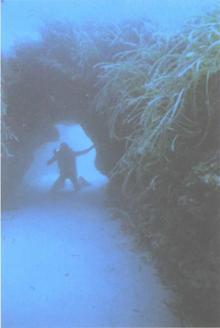 Underworld: The Mysterious Origins of Civilization
Underworld: The Mysterious Origins of Civilization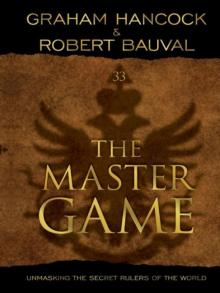 The Master Game: Unmasking the Secret Rulers of the World
The Master Game: Unmasking the Secret Rulers of the World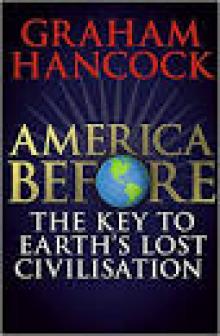 America Before
America Before Entangled
Entangled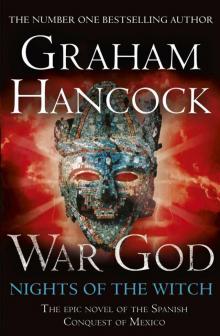 War God: Nights of the Witch
War God: Nights of the Witch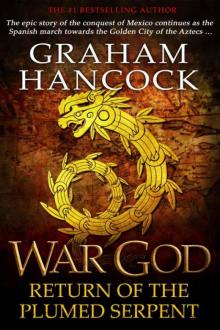 War God: Return of the Plumed Serpent
War God: Return of the Plumed Serpent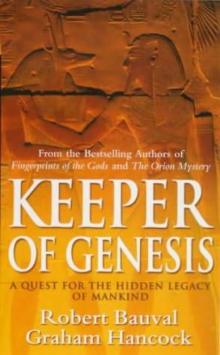 The Message of the Sphinx AKA Keeper of Genesis
The Message of the Sphinx AKA Keeper of Genesis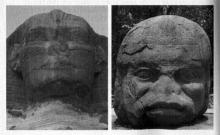 Fingerprints of the Gods
Fingerprints of the Gods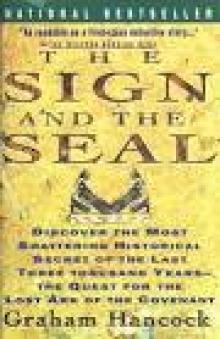 The Sign and the Seal
The Sign and the Seal The Mars Mystery: The Secret Connection Between Earth and the Red Planet
The Mars Mystery: The Secret Connection Between Earth and the Red Planet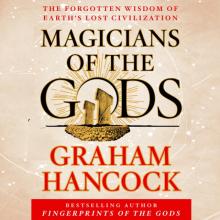 Magicians of the Gods: The Forgotten Wisdom of Earth's Lost Civilization
Magicians of the Gods: The Forgotten Wisdom of Earth's Lost Civilization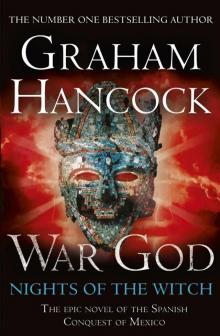 War God
War God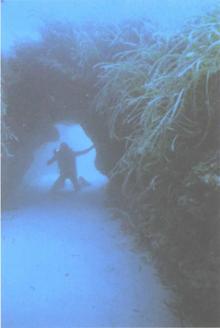 Underworld
Underworld The Mars Mystery
The Mars Mystery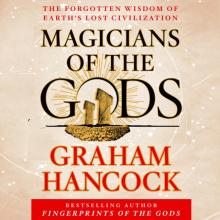 Magicians of the Gods
Magicians of the Gods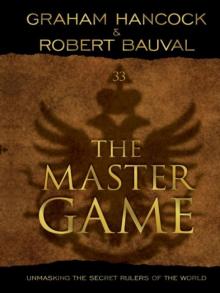 The Master Game
The Master Game